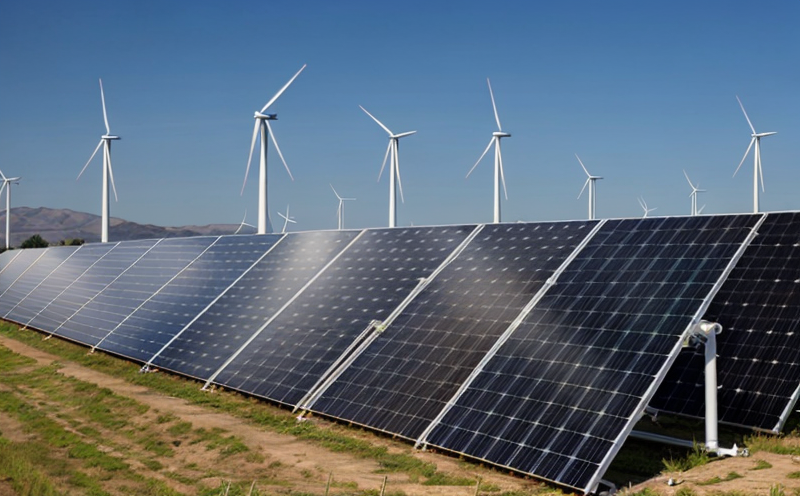IEEE 1547 Interconnection Safety Testing of Renewable Energy Systems
The IEEE Standard 1547-2018, titled "Standard for Interconnecting Distributed Resources with Electric Power Systems," has become a cornerstone in the renewable energy sector. This standard ensures that systems like photovoltaic (PV) solar installations, wind turbines, and other distributed generators can be safely connected to the grid without compromising grid stability or posing risks to personnel.
The IEEE 1547-2018 covers three primary domains: short-circuit current testing, voltage and frequency ride-through requirements, and safety interconnection equipment. Short-circuit current is a critical parameter that defines how much fault current the renewable system can safely supply to the grid during faults. This prevents overloading of circuit breakers or fuses which could lead to cascading failures.
Voltage and frequency ride-through criteria ensure that systems maintain their connection to the grid under adverse conditions such as voltage sags, swells, or frequency deviations. These tests are crucial for verifying the system's robustness in maintaining stability during transient events like lightning strikes or line faults. The standard specifies test procedures where the renewable energy system is subjected to various levels of fault current and power quality disturbances.
Safety interconnection equipment must comply with IEEE 1547-2018 to ensure that they can safely disconnect from the grid in case of faults. This feature, known as "safe islanding," prevents injury or damage by ensuring that downstream equipment does not receive dangerous levels of power during a fault.
Testing per IEEE 1547 involves rigorous evaluation using specialized test rigs and instrumentation capable of simulating real-world scenarios. The testing apparatus includes grid simulation systems, current transformers, voltage regulators, and data acquisition systems to capture detailed performance metrics.
The acceptance criteria for compliance are strictly defined in the standard itself. Compliance is typically assessed through a combination of theoretical analysis and physical testing. The primary goal is to demonstrate that the renewable energy system behaves as specified under all relevant conditions. This includes demonstrating safe operation during fault events, maintaining stable voltage/frequency levels, and ensuring robust disconnection mechanisms.
Given the critical nature of grid integration for renewable energy systems, compliance with IEEE 1547-2018 is mandatory for any system that intends to connect to a utility grid. Failure to comply can result in significant legal and financial penalties, as well as potential safety hazards.
The testing process involves several stages:
- Preparation of the renewable energy system according to specified guidelines.
- Conduction of short-circuit current tests using a grid simulator.
- Performance under voltage and frequency disturbances in controlled conditions.
- Evaluation of safety interconnection equipment performance.
The results are meticulously documented, including detailed reports on the system's behavior during each test phase. These reports serve as proof of compliance and are essential for regulatory approval.
Why It Matters
The IEEE 1547-2018 standard is pivotal in ensuring the safe integration of renewable energy systems into existing grid infrastructures. By mandating comprehensive testing, it addresses several key concerns:
- Grid Stability: Ensures that the renewable system does not destabilize the grid during faults or other disturbances.
- Potential Hazards: Minimizes risks to public safety and personnel by ensuring robust disconnection mechanisms.
- Economic Benefits: Reduces the likelihood of costly outages and repairs, enhancing overall reliability and efficiency.
The standard also promotes interoperability between different renewable energy systems and grid operators. This standardization fosters a more efficient and resilient power grid capable of leveraging distributed generation resources effectively.
In addition to these benefits, compliance with IEEE 1547-2018 can significantly enhance the reputation of renewable energy developers and manufacturers. It demonstrates a commitment to safety and quality, which is increasingly important in regulatory environments where stringent standards are enforced.
Benefits
Compliance with IEEE 1547-2018 offers numerous advantages to stakeholders involved in renewable energy projects:
- Regulatory Compliance: Ensures that systems meet the required safety and reliability standards.
- Increased Safety: Reduces risks associated with grid integration, protecting personnel and equipment.
- Enhanced Reliability: Improves system performance under adverse conditions, leading to more dependable energy supply.
- Economic Efficiency: Minimizes operational costs by preventing potential outages and repairs.
- Better Integration: Facilitates smoother connections between renewable systems and the grid, enhancing overall efficiency.
The standard also supports innovation in the renewable energy sector by providing clear guidelines for development. It encourages the creation of safer, more reliable, and interoperable renewable energy systems that can seamlessly integrate into existing power grids.
Industry Applications
| Application Area | Description |
|---|---|
| Solar Photovoltaic Systems | Ensure safe connection and reliable performance under various fault conditions. |
| Wind Energy Systems | Evaluate robustness in adverse grid conditions to maintain stable power supply. |
| Battery Storage Systems | Demonstrate safe disconnection mechanisms during faults for enhanced safety. |
| Hybrid Renewable Systems | Test the integration of multiple renewable resources into a single interconnected system. |
| Grid-Tied Inverters | Ensure compliance with IEEE 1547-2018 for safe and reliable grid interconnection. |
| Distributed Generation Projects | Verify the safety and reliability of small-scale renewable systems connected to the grid. |
The applications of IEEE 1547-2018 are not limited to standalone projects but also extend to broader initiatives aimed at enhancing grid resilience. By ensuring that all interconnected renewable energy systems meet stringent safety and reliability criteria, this standard contributes significantly to the sustainability and efficiency of power distribution networks.





